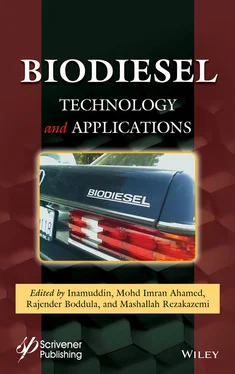Table 1.8 Some examples to produce biodiesel using combination of lipases.
| Combination of lipases |
Immobilized on |
Substrate |
Acyl acceptor |
Yield |
Reference |
| Thermomyces lanuginosus lipase and Rhizomucor miehei lipase. |
Lewatit VP OC 1600 |
Soybean oil |
Ethanol |
90% |
[207] |
| TLL immobilized on acrylic resin, RML immobilized on anion-exchange resin |
Palm oil |
Ethanol |
80% |
[208] |
| Pseudomonas fluorescens and Candida rugosa |
Accurel PE-100 microporous polypropylene powder |
Used palm oil |
Ethanol |
>67% |
[209] |
| Immobilized Pseudomonas fluorescens lipase followed by immobilized Pseudomonas cepacia lipase |
macroporous polypropylene |
Soybean oil |
Methanol |
98% |
[210] |
| Combined use of Lipozyme TL IM and Novozym 435 |
Lipozyme TL IM immobilized on acrylic resin and Novozym 435 immobilized on microporous resin |
waste cooking sunflower oil |
Methanol |
99% |
[211] |
| Novozym 435 (CALB) and Lipozyme RM-IM (RML) |
RML immobilized on an anion-exchange resin, and CALB immobilized on a macroporous resin |
Soybean oil |
Ethanol |
80% |
[212] |
| Canola oil |
Methanol |
>95% |
[213] |
| Combination of Rhizopus arrhizus lipase and Candida antarctica lipase B |
microporous polypropylene Accurel MP1000 |
Triolein |
Ethanol |
96% |
[214] |
| Candida rugosa lipase followed by Novozym 435 |
Macroporous acrylic resin |
Acid oil, product of vegetable oil |
Methanol |
91% |
[215] |
1.11.2 Microwave and Ultrasonic-Assisted Reaction
Microwave employment in the chemical or biochemical reaction is very clean, economic, fast and energy efficient method. Use of microwave is very helpful in substrate preparation, extraction, and biodiesel production. Microwave irradiation assists the reaction by providing direct energy to the reactants, and hence, the loss of energy becomes minimal. This feature makes it economic than using other conventional methods of heating to make the reaction possible [221]. Easy energy transfers and use makes the enzyme to perform better and its easy separation leads to cost reduction. So, this environment friendly method provides energy efficient, faster and cost-effective reaction. There have some research investigations been done to analyze how effective it would be to use microwave. Macauba oil transesterification was performed using Novozyme 435 and Lipozyme IM in the presence of ethanol as acyl acceptor. Activities of these enzymes were checked and compared in the presence and absence of microwave. Before microwave assistance enzymatic activity values of Novozyme 435 and Lipozyme IM were 0.09 and 0.08, respectively. But after microwave presence activity value were 0.6 and 0.4, respectively. Results were clear that microwave assistance enhanced enzymatic activity about one order of magnitude [222, 223]. In another experiment, soybean oil and sunflower oil was transesterified using Novozyme 435 and ethanol to oil molar ratio was 3:1. Resultant ester yield was more than 99% within just 3 h when reaction system was accompanied with microwave while conventional heating produced yield about 57% with the same reactions conditions as provided in case of microwave reaction system for biodiesel production. So, microwave-assisted reaction produced better and faster biodiesel yield compared to conventional heating reaction system [224, 225].
According to Zhang et al . [224], microwave and deep eutectic solvents assisted transesterification of yellow horn seed oil using Novozyme 435 resulted in 95% conversion yield. Ultrasonication is another advancement in effective biodiesel production. Just like microwave, ultrasonic assistance increases the reaction rate and ultimately makes the transesterification cost effective [225]. Increase in reaction rate is linked with enhancement in mass transfer and good energy input. Ultrasonication also increases the surface area for the reactant to work efficiently. Moreover, it also boosts the enzymatic catalytic activity and efficiency which provides optimum results even when catalyst is in low quantity [226, 227]. Sometimes, ultrasonication when combined with other method it produces better results and effective rapid transesterification. According to Yu et al . [227], transesterification of soybean oil in the presence of methanol and Novozyme 435 as biocatalyst produced good results when ultrasonic irradiation applied on the reactants. When ultrasonic irradiation with vibration (UIV) applied then conversion of soybean oil into FAME produced 96% yield in just 4 h and Novozyme 435 did not lose any activity after five cycles. But in the absence of UIV, comparable results were obtained after 12 h. Results proved that presence of UIV in the enzymatic transesterification reaction gave faster and better yields with no loss in enzyme activity. In another research, Novozyme 435 was utilized to catalyze transesterification of waste cooking oil in an ultrasound-assisted environment. The resultant biodiesel yield was 75.19% in just 2 h. It was also found that ultrasound along with little agitation/vibration made the reaction more efficient [228]. Just like microwave, ultrasonication is also taking attention of researchers to produce better and cost-efficient biodiesel.
Researchers have produced some good results in the past couple of years using ultrasonication method. Ultrasound-assisted transesterification of soybean oil using ethanol and Novozyme 435 resulted in ~78 % yield in just 1 h. this method of assistance has the potential to become alternative to the alkali catalyzed or conventional enzymatic biodiesel production [229]. In another experiment, sunflower oil and methanol were used for biodiesel production in the presence of Lipozyme TL-IM under ultrasound-assisted system. Results indicated that ultrasound assistance suppresses the much needed requirement of using methanol, making the reaction fast and clean [230]. Conventional transesterification using bath process technique requires a lot of time because phase separation and recovery of glycerol and biodiesel is a time-consuming process. Use of ultrasound and microwave is very helpful in this regard and it has been proved that ultrasound and microwave assistance make the reaction rapid and cost efficient.
1.12 Lipase Catalyzed Reaction Modeling and Statistical Approaches for Reaction Optimization
A lot of methods have been tried for the modelling of lipase catalyzed reactions to fully understand reaction mechanism. Need of better catalyst with great substrate specificity, immobilization, whole-cell catalyst, and manipulation of lipase, all these methods have been applied with various techniques to get better results [231]. But all these methods have been used by hit and trial method to check feasibility. Apart from dealing with lipases, there are many more parameters to set optimally to achieve maximum output. These parameters include temperature, pH, water content, alcohol-to-oil molar ratio, and bioreactor choice. All reaction conditions using various combination of parameters with diverse conditions have been used but it is not actually we need because hit and trial method leads to expensive experimentation. In this era of science and technology, in silico experimentation is in great demand and it can apply to each and every field. Optimization of biochemical processes is one of key things to produce cost effective results. In order to optimize a reaction, there are various parameters that are dealt with but normally optimization accounts for changing just one parameter at a time by keeping others constant and similarly one by one all parameters are optimized. This technique is called one variable at a time technique. The major limitation of this technique is that it does not show interactive results of parameters. So, it does not produce results based on all parameters effects at the same time on the process.
Читать дальше












